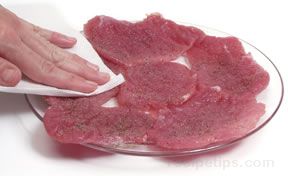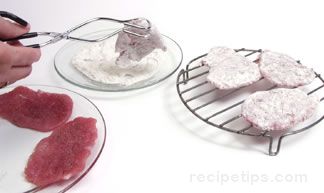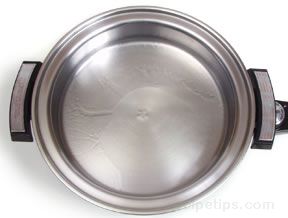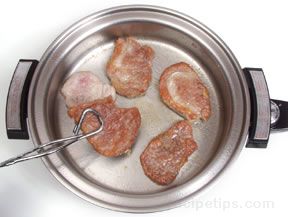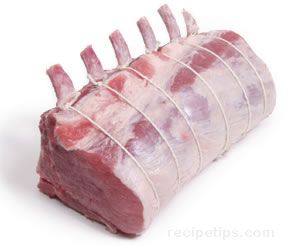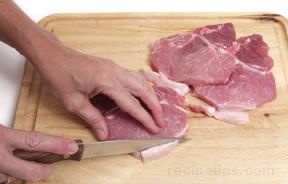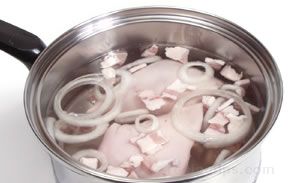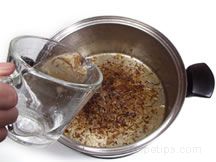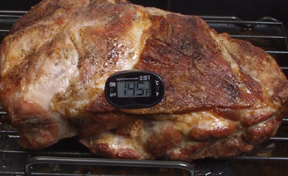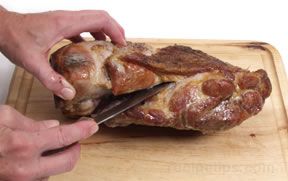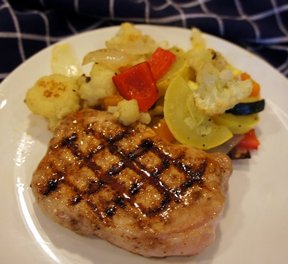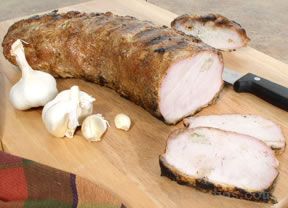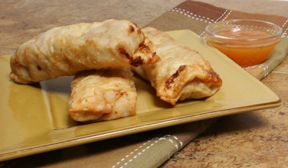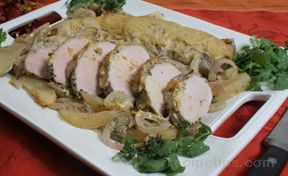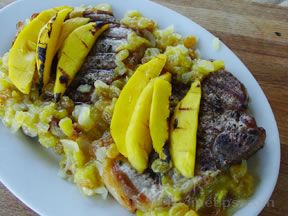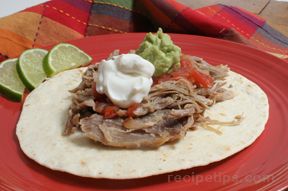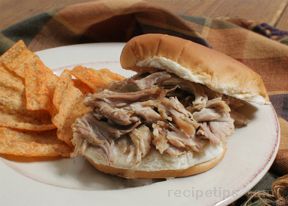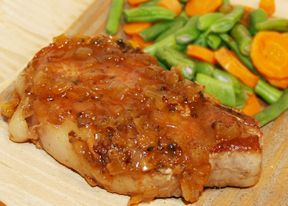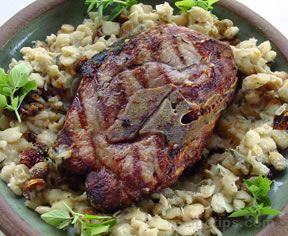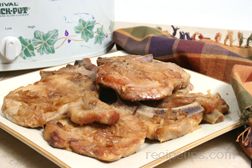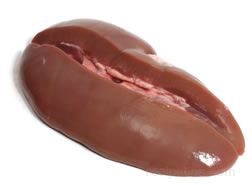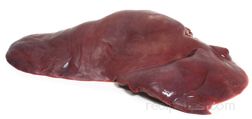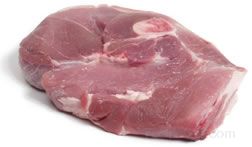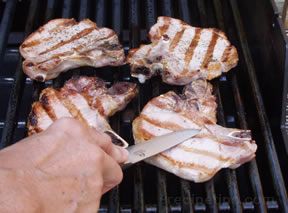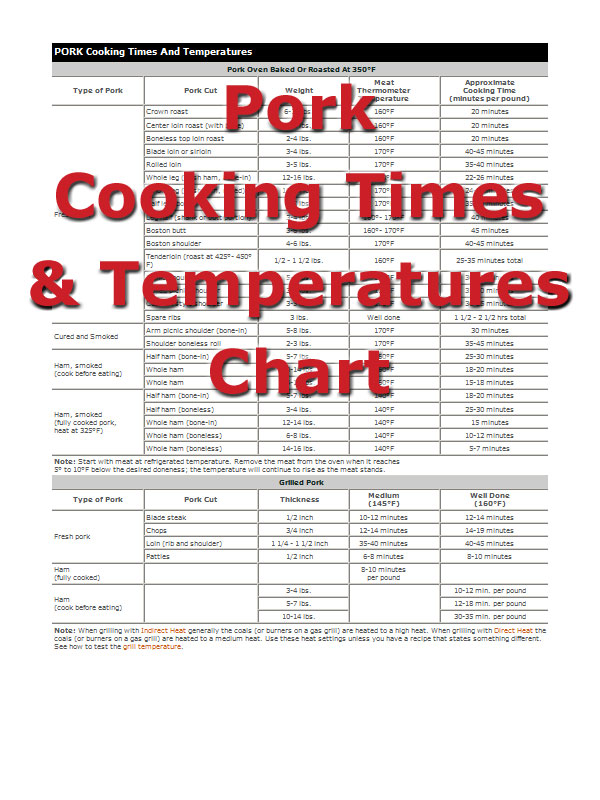|
Sautéing is a dry heat cooking method that quickly cooks the pork using a little oil and high heat. The types of pork best suited for sautéing are the more tender lean cuts, such as loin chops, tenderloin medallions, cutlets, and ground patties. They are often served with a sauce made from the pan drippings. The oil used must be able to withstand high heat without burning. Olive oil, vegetable oil, corn oil, canola oil, and soy oil are commonly used oils when sautéing. Butter can also be used but it should be used in combination with oil so that the butter does not burn when exposed to the high heat used for sautéing. Sautéing and the searing process, used in browning the meat in the beginning steps of braising, are basically the same methods of cooking, except searing browns the meat but does not completely cook it. Sautéing browns the meat and it also thoroughly cooks the meat. Seared pork requires the use of another cooking method, such as braising or roasting, to finish the cooking process. When sautéing, the meat is generally thinner and smaller in size, which allows it to completely cook during the sautéing process. To sauté, use a medium-high heat in order to preheat the pan to condition it before adding oil. Add only enough oil to lightly coat the bottom of the pan to prevent food from sticking. A nonstick pan or a well-seasoned pan may not require as much oil. Be sure the pan and cooking oil are at the proper temperature before adding the meat so that it will begin to cook immediately once it is placed in the pan. The meat should be cut into small pieces that are ½ inch or less in thickness and fairly uniform in size. Season the cuts with salt, pepper and any other required herbs or rubs. The meat should be seasoned before cooking to enhance its flavor as it cooks.
| ||||||||||||
Loading
Sautéing Pork

Provided By
RecipeTips
RecipeTips

Loading
There currently aren't any reviews or comments for this article. Be the first!
Advertisement
Advertisement

